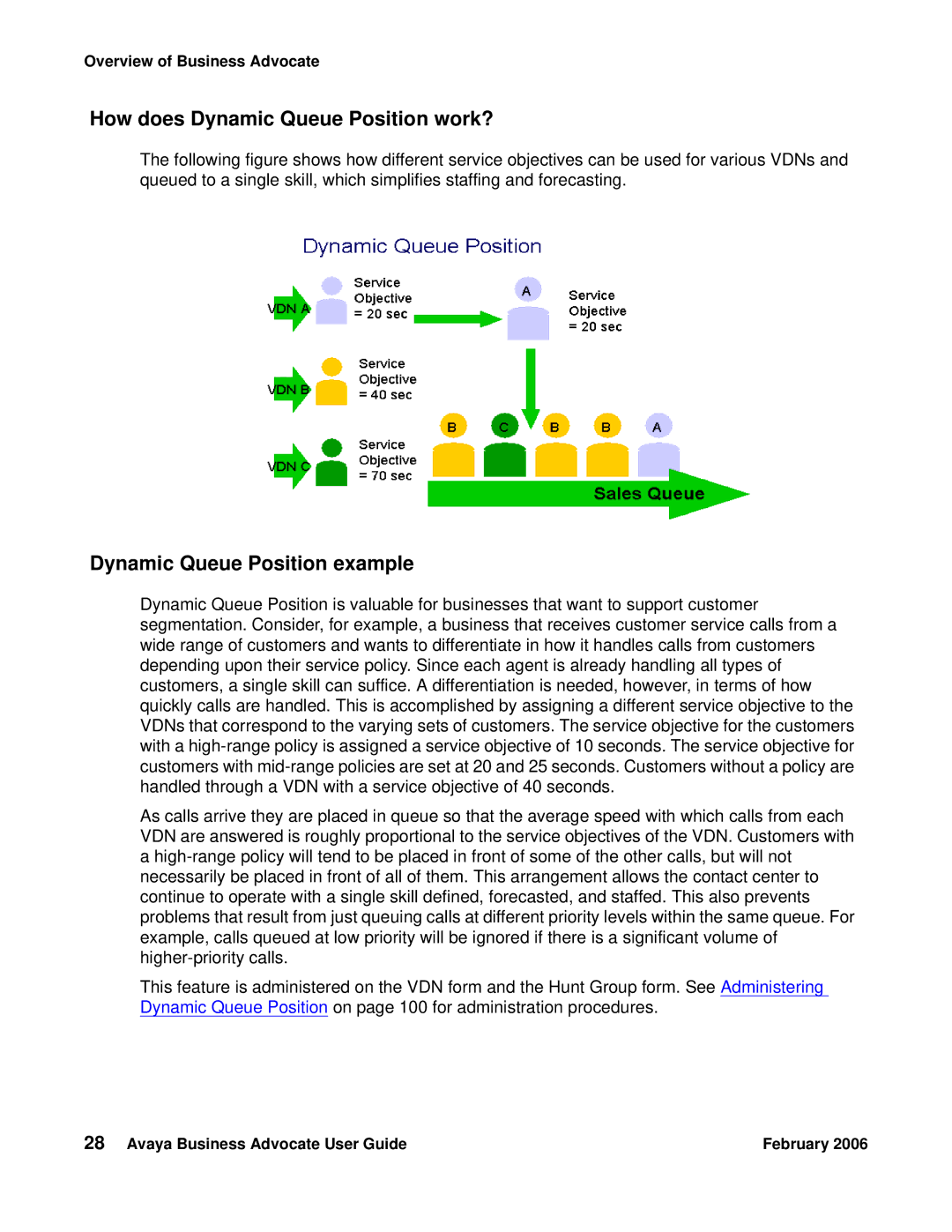
Overview of Business Advocate
How does Dynamic Queue Position work?
The following figure shows how different service objectives can be used for various VDNs and queued to a single skill, which simplifies staffing and forecasting.
Dynamic Queue Position example
Dynamic Queue Position is valuable for businesses that want to support customer segmentation. Consider, for example, a business that receives customer service calls from a wide range of customers and wants to differentiate in how it handles calls from customers depending upon their service policy. Since each agent is already handling all types of customers, a single skill can suffice. A differentiation is needed, however, in terms of how quickly calls are handled. This is accomplished by assigning a different service objective to the VDNs that correspond to the varying sets of customers. The service objective for the customers with a
As calls arrive they are placed in queue so that the average speed with which calls from each VDN are answered is roughly proportional to the service objectives of the VDN. Customers with a
This feature is administered on the VDN form and the Hunt Group form. See Administering Dynamic Queue Position on page 100 for administration procedures.
28 Avaya Business Advocate User Guide | February 2006 |
